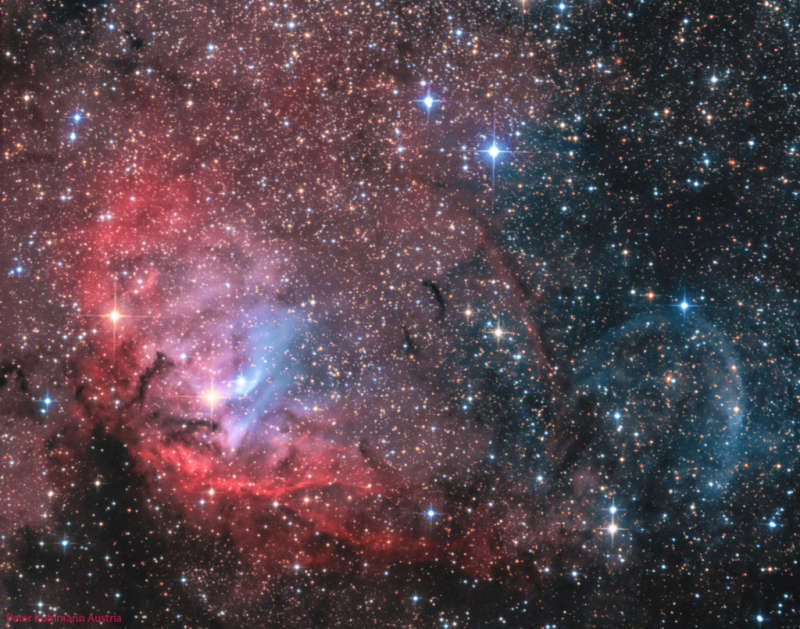
|
Credit & Copyright: Peter Kohlmann
Explanation:
Framing a bright emission region,
this telescopic view
looks out along
the plane of our Milky Way Galaxy toward the nebula rich constellation
Cygnus the Swan.
Popularly called the Tulip Nebula,
the reddish glowing cloud of interstellar gas and dust
is also found in the
1959
catalog
by astronomer Stewart Sharpless
as Sh2-101.
Nearly 70 light-years across, the complex and beautiful Tulip Nebula
blossoms about 8,000 light-years away.
Ultraviolet radiation from young energetic stars at the edge of the Cygnus
OB3 association,
including
O star HDE 227018,
ionizes the atoms
and powers the emission from the Tulip Nebula.
Also in the field of view is microquasar
Cygnus X-1,
one of the strongest X-ray sources in planet Earth's sky.
Blasted by powerful jets from a
lurking
black hole
its fainter bluish curved shock front is
only just visible though, beyond
the cosmic Tulip's petals near the right side of the frame.
Back to School?
Learn Science with NASA
|
January February March April May June July August September October November December |
| ||||||||||||||||||||||||||||||||||||||||||||||||
NASA Web Site Statements, Warnings, and Disclaimers
NASA Official: Jay Norris. Specific rights apply.
A service of: LHEA at NASA / GSFC
& Michigan Tech. U.
Based on Astronomy Picture
Of the Day
Publications with keywords: emission nebula
Publications with words: emission nebula
See also:
- APOD: 2025 September 19 Á The NGC 6914 Complex
- APOD: 2025 September 10 Á The Great Lacerta Nebula
- APOD: 2025 July 21 Á Cats Paw Nebula from Webb Space Telescope
- APOD: 2025 July 16 Á The Rosette Nebula from DECam
- APOD: 2025 July 5 Á Ou4: The Giant Squid Nebula
- APOD: 2025 June 26 Á The Seagull Nebula
- NGC 6164: A Dragon s Egg
